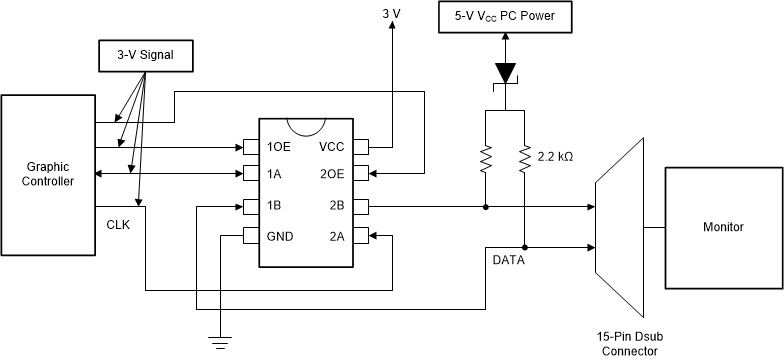SCDA008C June 2021 – November 2021 CD4052B , TS3A225E , TS3A44159
- Trademarks
- 1Introduction
- 2Semiconductor Switches
- 3Basic Signal-Switch Structures
- 4Key Concerns in Digital-Switch Applications
- 5Signal Switch Families
- 6Applications
- 7Conclusion
- 8References
- 9Revision History
-
A Test
Measurement Circuits
- A.1 Measurement Setup for ron
- A.2 Measurement Setup for VO vs VI Characteristics
- A.3 Voltage-Time Waveform Measurement (Switch On)
- A.4 Voltage-Time Waveform Measurement (Switch Off)
- A.5 Output-Skew Measurement
- A.6 Simulation Setup for Undershoot Measurement
- A.7 Laboratory Setup for Attenuation Measurement
- A.8 Laboratory Setup for Off Isolation Measurement
- A.9 Laboratory Setup for Crosstalk Measurement
5.4.2.1 Voltage Translation for an External Monitor Terminal in a Notebook PC
Figure 5-28 shows a typical application for the level-translation feature of the CB3T3306. The CB3T3306 is used as a voltage translator between a monitor and a graphic controller. Data transfer between these two systems is bidirectional, while the clock signal transfer is unidirectional and flows only from graphic controller to monitor. Pullup resistors are used for translating from low to high.
 Figure 5-28 Data and Clock-Signal Data Transfer Using the CB3T3306
Figure 5-28 Data and Clock-Signal Data Transfer Using the CB3T3306